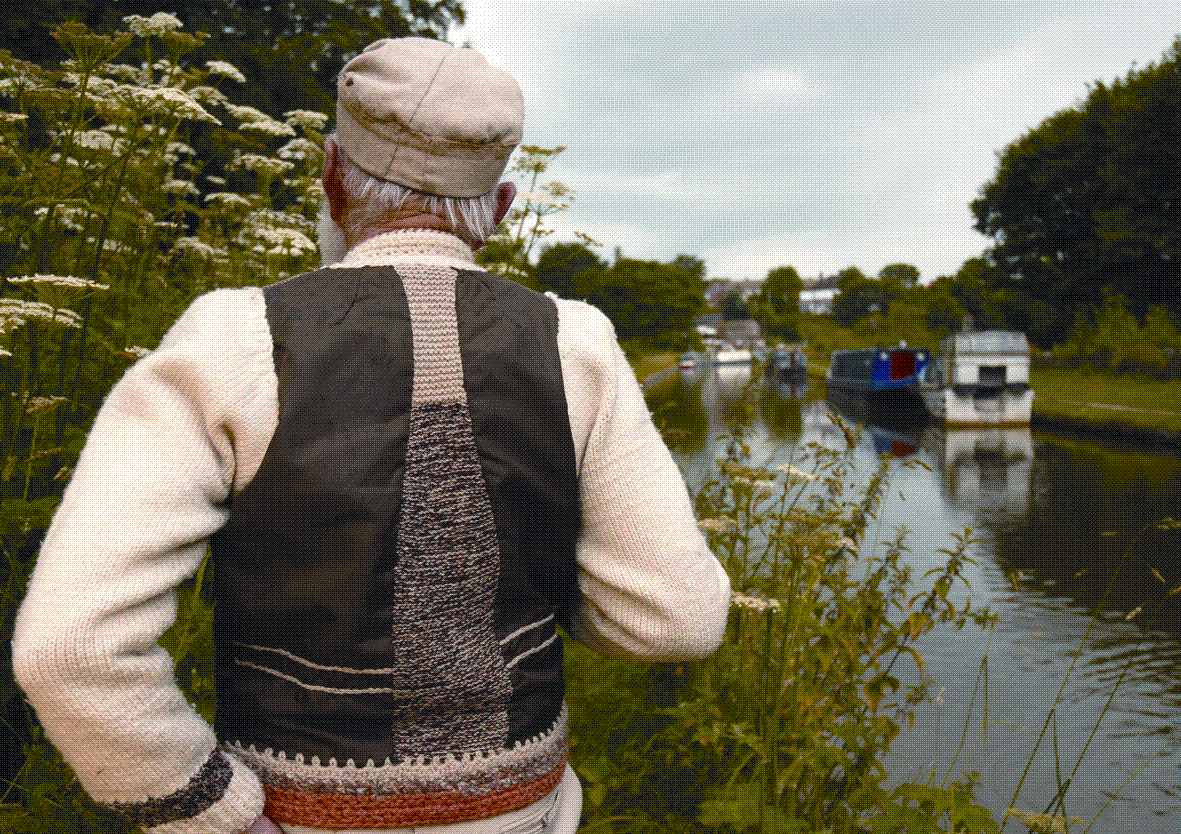More materialism please
 Fashion and sustainability do not easily mix. As societies become richer, they tend to buy more clothing. Old clothes languishing at the back of the wardrobe are thrown out, usually ending up in landfill or dumped into used clothes markets in less prosperous countries. One study showed that the weight of textiles sold in the UK nearly doubled in the prosperous decade from 1998 to 2007. (1) In How to Live a Low-carbon Life, I estimate that the carbon footprint of clothing in the UK may be as much as a tonne per person per year, or not far short of 10% of the total, and this figure will rise alongside any increase in the future sales of clothing. Fashion exemplifies the difficulties of reconciling economic growth, which gives us all more money to buy clothes, with the need to reduce emissions.
The essays in a fascinating new book, Shaping Sustainable Fashion, look in detail at the how our need to keep ourselves warm and looking good can be reconciled with reducing CO2, and also reducing the environmental impact of growing cotton, possibly the most ecologically damaging crop in the world. (2) As the concluding chapter notes, we will not solve the problem until we become truly materialistic. Fast fashion and cheap disposable clothing show that ‘we fail to invest deep or sacred meanings in material goods. Instead we simply have ‘an unbounded desire to acquire, followed by a throwaway mentality’, which is the opposite of real materialism.
Fashion and sustainability do not easily mix. As societies become richer, they tend to buy more clothing. Old clothes languishing at the back of the wardrobe are thrown out, usually ending up in landfill or dumped into used clothes markets in less prosperous countries. One study showed that the weight of textiles sold in the UK nearly doubled in the prosperous decade from 1998 to 2007. (1) In How to Live a Low-carbon Life, I estimate that the carbon footprint of clothing in the UK may be as much as a tonne per person per year, or not far short of 10% of the total, and this figure will rise alongside any increase in the future sales of clothing. Fashion exemplifies the difficulties of reconciling economic growth, which gives us all more money to buy clothes, with the need to reduce emissions.
The essays in a fascinating new book, Shaping Sustainable Fashion, look in detail at the how our need to keep ourselves warm and looking good can be reconciled with reducing CO2, and also reducing the environmental impact of growing cotton, possibly the most ecologically damaging crop in the world. (2) As the concluding chapter notes, we will not solve the problem until we become truly materialistic. Fast fashion and cheap disposable clothing show that ‘we fail to invest deep or sacred meanings in material goods. Instead we simply have ‘an unbounded desire to acquire, followed by a throwaway mentality’, which is the opposite of real materialism.
The photograph at the top of this post is of an article of clothing worn by Edward for several decades and discussed in the profoundly thought-provoking essay by Kate Fletcher that concludes Shaping Sustainable Fashion. Here is what Edward says about this valued and stylish piece of clothing.
‘I call this my three stage jacket. It began about forty years ago as a very slim waistcoat that was given to me. I knitted a panel and put it in the back just to be able to fasten it together at the front, you see. And then about fifteen years ago I added sleeves and a collar and some trimmings. And then, only about five years ago, I became a bit too big to button it up so I added latchets across the front so that I can fasten it.’
This is true materialism. It values and celebrates the physical objects of our lives, maintaining and refreshing them as we pass through the world from birth to death. I suspect that this jacket is indelibly associated with Edward in the minds of his friends. Because it is largely made by him, it exhibits his manual skills to all he meets. It is part of him.
Of course we need to recycle more; only about 10,000 tonnes of the 2m tonnes of textiles bought a year in the UK is properly recycled by taking the clothing apart and reusing the fibres, representing about one half of one percent of total consumption. But even a massive growth in full recycling is not enough. The world has to find ways of divorcing our understanding of ‘prosperity’ from the continued growth in the number of things we buy, consume, and then throw away. As Kate Fletcher suggests, people need to recast themselves, moving away from being just passive consumers, enslaved to Primark and Zara’s endless rotation of new items in shop windows, to becoming ‘suppliers of ideas and skills to fashion’ so that they value and cherish the clothes that they own, caring for them for decades.
We will not solve the world’s multiple ecological problems by telling ourselves and other people to buy less. The importance of consumption is far too firmly ingrained into our modes of thought. No-one, for example, imagines that Catherine Middleton should wear an old dress for her wedding this week. However a truly materialistic society would be looking forward to seeing her wearing the outfit her mother and her grandmother wore as their wedding dress, updated and adapted so that it became hers, perhaps even by using a sewing machine she learnt to use at school. Her husband, mutatis mutandis, would do the same.
(1) Maximising Reuse and Recycling of UK Clothing and Textiles, Oakdene Hollings for Defra, October 2009. Chart on page 11 shows a rise from an index of about 90 in 1998 to over 160 in 2007.
(2) Alison Gwilt and Timo Rissanen, Shaping Sustainable Fashion: changing the way we make and use clothes, Earthscan 2011